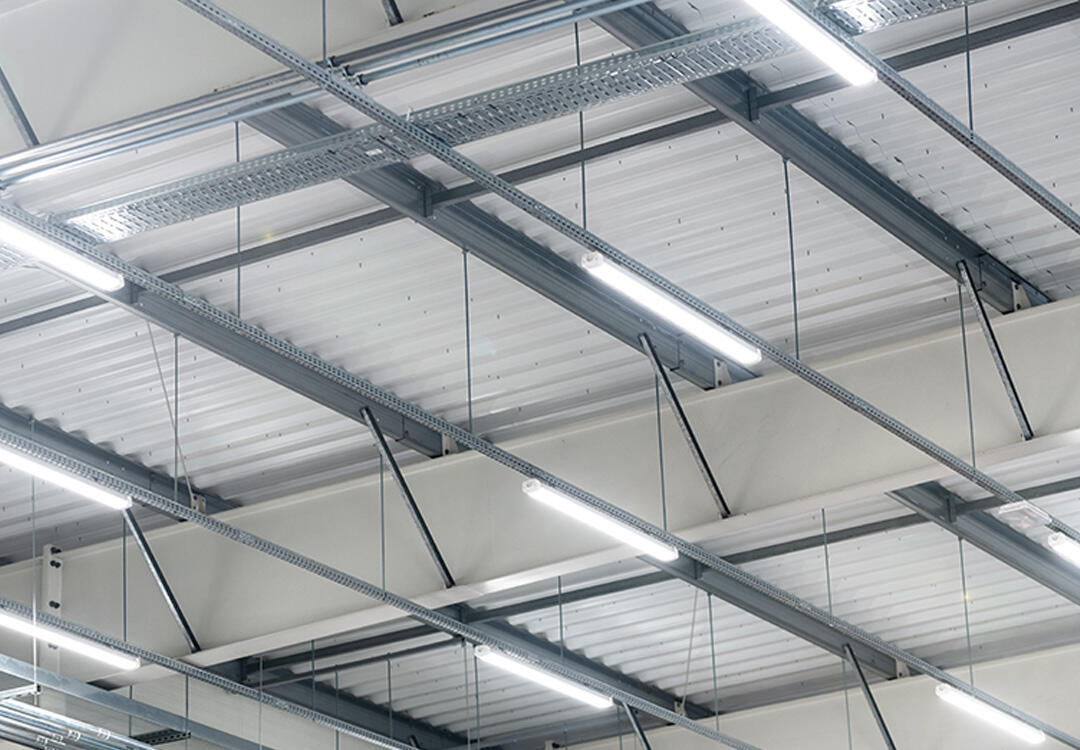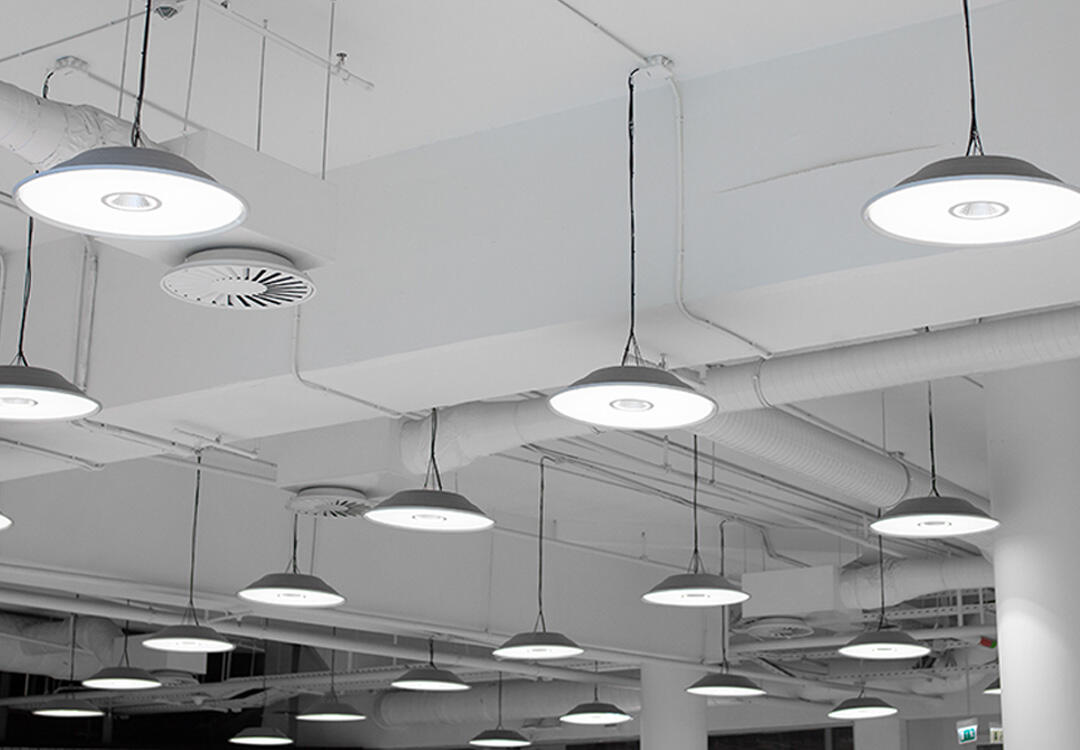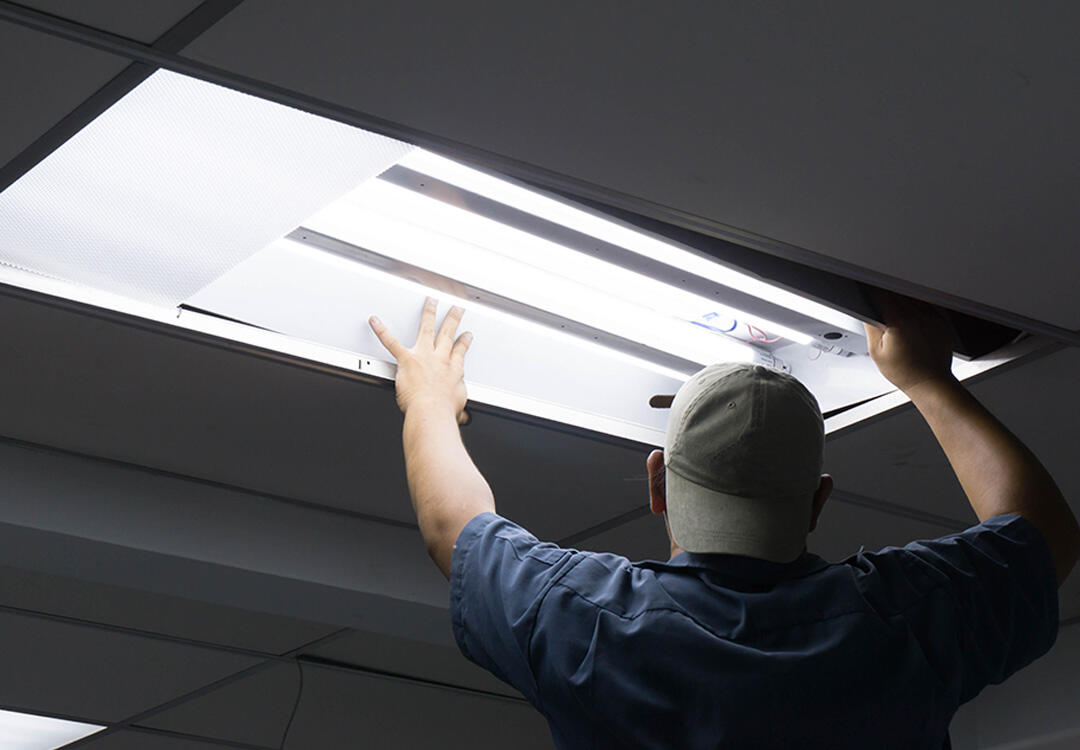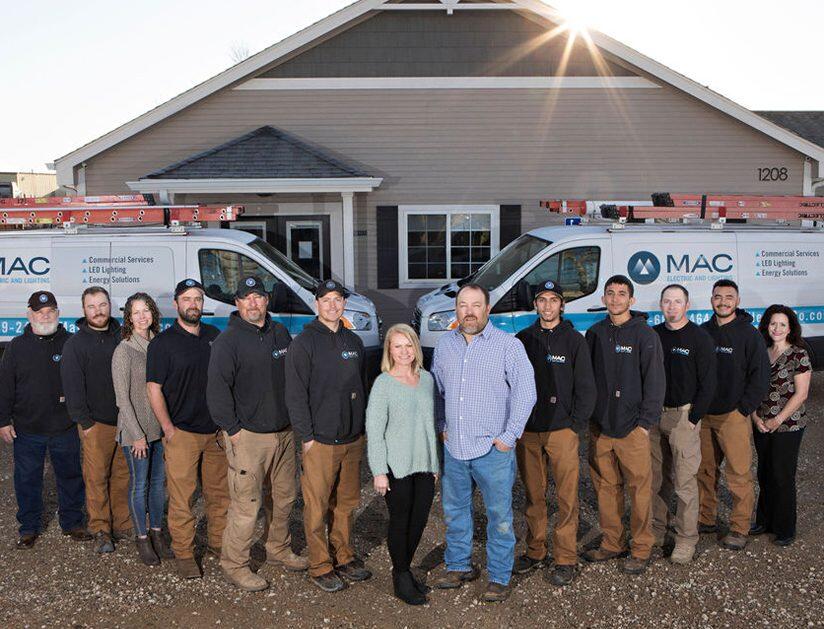Lighting has always shaped how we feel in a space. But only recently have we started measuring how much it affects how we sleep, focus, and function. More building owners...
Read MoreAs a commercial building owner or property manager, it’s vital to stay abreast of the latest advancements in the commercial real estate landscape. A key innovation that’s currently revolutionizing the industry is the transition toward energy-efficient lighting solutions – namely, commercial lighting upgrades.
This guide will explore the various benefits of commercial lighting upgrades and how they contribute to a more profitable and sustainable property management strategy. We will also delve into the return on investment (ROI) of commercial lighting upgrades, providing a clear picture of the financial returns you can expect from such an investment.
Lighting has always shaped how we feel in a space. But only recently have we started measuring how much it affects how we sleep, focus, and function. More building owners...
Read MoreIn the contemporary business landscape, meeting OSHA lighting requirements for the workplace and adhering to government ordinances are crucial for safety, comfort, and compliance. At MAC Electric, we understand the...
Read MoreIn today’s fast-paced world, managing operating expenses is crucial for maintaining a competitive edge in business. When it comes to these expenses, commercial lighting often takes the top spot as...
Read More
Let’s start with what ‘LED’ actually means. LED stands for light-emitting diode and was invented in 1962 by a General Electric scientist named Nick Holonyak, Jr. The commercial LED lighting that you know today is still a relatively new invention, inspired by the ultra-bright blue LEDs invented in 1994 by Shuji Nakamura.
So how is LED lighting different from incandescent lighting? While incandescent bulbs use a curly tungsten filament that is burned and only lasts as long as the lifespan of the filament, LED lighting uses a solid conductor, such as a crystal, that lets an electrical current pass through, rather than burning the substance, illuminating the bulb.
Upgrading to more efficient commercial lighting can offer numerous benefits for building owners. Some of those benefits include:
Significant energy savings: LED lighting often requires up to 75% less energy than traditional bulbs, resulting in substantially lower electricity costs.
Improved lighting quality: LED lights create a brighter and more evenly distributed light that can better illuminate the space, which increases safety and creates a more pleasant atmosphere.
Reduced maintenance costs: LED lights are generally long-lasting with some models having lifespans of over 10 years, meaning fewer bulb replacements and associated labor costs for building owners.
Tax credits/incentives available: There are many federal tax credits or incentives available to building owners who invest in an energy-efficient commercial LED lighting upgrade.
Let’s take a closer look at each one.
A significant benefit of commercial LED lighting upgrades is the potential for substantial energy savings. LED lighting consumes up to 75% less energy than traditional bulbs, resulting in lower electricity costs and less strain on the building’s electrical system. According to the Department of Energy, LED lighting can reduce energy costs by up to 30%, making it a profitable long-term investment for building owners.
In addition to these savings, upgrading your commercial lighting can contribute to a more sustainable and environmentally conscious approach to business. By implementing energy-efficient technologies like LED lighting, you can decrease energy consumption while also creating a more comfortable and productive work environment for your employees.
What’s more, energy savings can improve your building’s market value and appeal to prospective tenants who are increasingly prioritizing sustainability in their leasing decisions. Ultimately, investing in energy savings is a smart and cost-effective decision that can have a positive impact on your bottom line and your community as a whole.
Another mentionable advantage of upgrading commercial lighting is the improved lighting quality it provides. LED light produces a brighter and more even light that illuminates rooms more effectively. This results in a safer and more productive working environment, as better lighting creates a more pleasant atmosphere that promotes positivity and productivity among staff.
As surprising as it may sound, the lighting of your commercial space can actually affect the health of your employees or tenants. The blue light emission of traditional fluorescent lighting and even some early iterations of LED lighting has been found to have drastic negative effects on our sleep quality.
A modern LED lighting upgrade, however, can have a positive impact on the circadian rhythms of all who operate out of your space. Add in smart lighting controls, and you’ll not only save another 25% in energy costs, but your commercial space will be customizable for any use.
Maintenance of your lighting system can add up, but an LED lighting upgrade can result in long-term maintenance cost savings. Unlike traditional bulbs, LEDs are more durable and have a longer lifespan – 50 times longer.
If you look at the math, every LED light replaced equals 50 incandescent light replacements. Many electricians charge around $3 to replace an incandescent bulb or LED fixture. With an LED fixture, you’ll spend $3 over a period that would have cost you $150 in incandescent bulb maintenance.
Additionally, an upgrade in your commercial building’s lighting system will result in less heat emission. Around 95% of the energy used by LEDs is in the form of light, and 5% is lost as heat. To provide perspective, energy lost as heat for incandescent bulbs is 90% and 80% for CFLs. LEDs not only provide a more comfortable working environment, but they also allow for an extended lifespan of your HVAC system due to less wear and tear.
Finally, building owners can benefit from numerous tax incentives and rebates for investing in energy-efficient commercial LED lighting upgrades.
The federal government offers various tax credits and rebate programs, including the Energy Policy Act (EPAct) of 2005, which provides a tax deduction of up to $1.88 per square foot for energy-efficient properties, including lighting. Also, you can actually claim eco-friendly LED lighting on your taxes in the United States, according to page 133 of the Inflation Reduction Act of 2022.
Taking advantage of these incentives can save building owners thousands of dollars and lighten the financial impact of their commercial lighting upgrade.
Then there are state-specific incentives. Depending on the energy company servicing your city, there are a variety of utility-funded energy rebate programs available for building owners who upgrade their commercial lighting. These programs aim to not only help commercial customers cut their energy use, but also utilize rebates and energy bill savings to pay the project costs. Even more, these funding programs require no out-of-pocket expenses for qualifying commercial customers.
Our expert staff specializes in these utility-funded energy rebate programs in Colorado, and we’d be delighted to walk you through the process. Contact us today to get started.

As a building owner or manager, it’s helpful to visualize the benefits of an investment like commercial LED lighting upgrades. As we addressed above, there are numerous savings avenues with a lighting upgrade. But what can that look like practically for your building?
To calculate the ROI of a lighting upgrade, you need to know:
Below you’ll find simple calculations you can use to estimate the potential savings available to you with a commercial lighting upgrade. It’s important to remember that these savings, while they may seem small at first, add up over time, increasing your ROI.
One of the most significant benefits of upgrading to commercial LED lighting is the potential for substantial energy savings. By reducing energy consumption, building owners can lower their electricity costs and contribute to a more sustainable and environmentally conscious approach to business. But how do you calculate the actual energy savings of a lighting upgrade?
Here are some steps to help you calculate your energy savings:
It’s important to note that these calculations are estimates and may vary based on factors such as energy rates, usage patterns, and maintenance costs. However, they can provide a useful starting point for building owners looking to make an informed decision about their lighting upgrade.
Estimating HVAC savings from switching to LED lights can be quite complex due to the many variables involved. These variables include the number and type of lights being replaced, the efficiency of the HVAC system, the design and insulation of the building, the local climate, and more.
However, it is generally accepted that LED lights generate less heat than traditional incandescent or fluorescent bulbs. This reduced heat generation can result in less strain on the HVAC system, especially in terms of air conditioning.
A frequently cited estimate is that for every 1 watt reduction in lighting, there is approximately a 0.32 watt reduction in cooling load. This means if you were to reduce your lighting load by 1000 watts (for example by replacing incandescent lights with LEDs), you might expect to reduce your cooling load by about 320 watts.
To calculate potential monetary savings from this reduction, you would need to know your local electricity rate and the number of hours per year the lights and air conditioning are in use. The formula would look something like this:
((Lighting reduction in watts * 0.32) * hours of operation per year * electricity rate) / 1000 = Estimated annual savings on air conditioning
It’s important to note that this is a rough estimate and the actual savings can vary based on the variables mentioned earlier.
At Mac Electric Company, we’ve helped numerous businesses upgrade their lighting to LED and experience significant benefits. Our turn-key commercial retrofit LED lighting solutions have future-proofed these businesses with EV charging stations. Here are some examples of the successful commercial lighting upgrades we’ve completed:
The cost of delaying a commercial lighting upgrade can be significant. Here are just a few reasons why it’s important to get started on your project as soon as possible:
When you’re considering whether or not to upgrade your commercial lighting system, it’s important to consider the pros and cons of each option.

A lighting upgrade can be a daunting task, especially if you’re not sure where to begin. Fortunately, there are several steps you can take to make the process easier and more efficient:
To summarize, implementing commercial lighting upgrades, especially shifting towards energy-efficient LED solutions, is a prudent decision with multiple benefits for commercial property owners and managers:
Additionally, these upgrades contribute towards a more sustainable business approach, which is both environmentally responsible and increasingly valued by tenants.
At Mac Electric Company, we’re experts in commercial lighting upgrades. Reach out to us to discuss how we can help your property transition to a more efficient and cost-effective lighting system.
Mac Electric and Lighting is a local family-owned electrical & energy contractor specializing in commercial LED lighting retrofits and EV charging solutions.
Our Value Engineering approach to every project saves our clients time and hassle from ideation to project completion. You’ll have a lasting solution that complies with local regulations, looks attractive, and ensures that you get every rebate you’re eligible for.
Contact us today to inquire about a Free EV Charging Station Quote for your property!

Fill out our custom quote request form and our team will be in touch soon!
Mac Electric & Lighting Company, Inc. is family owned and operated by Loveland, Colorado native and master electrician Shannon McLaughlin and his wife Michelle.